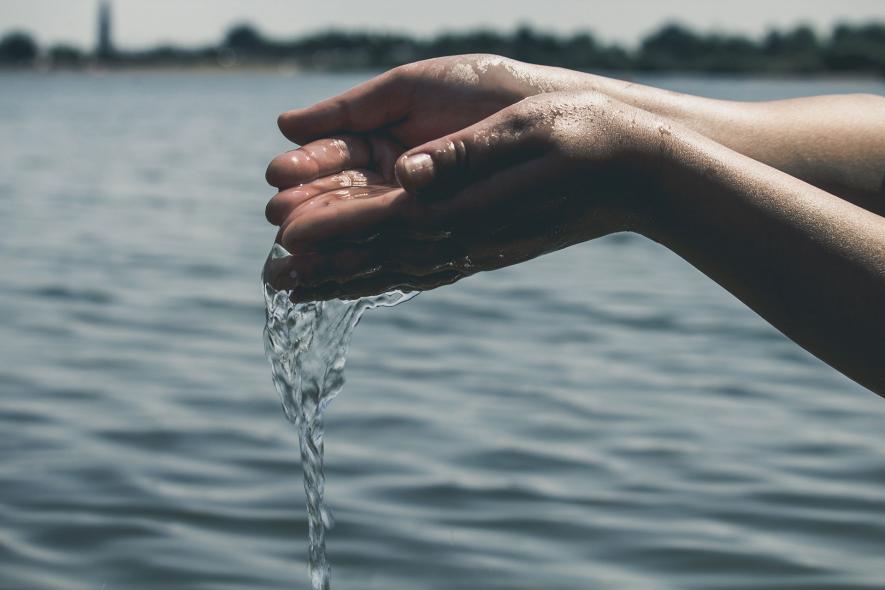Where Are World’s Water Stresses?

Representational Image. Image Courtesy: Pexels
In May 2023, the Arizona Department of Water Resources imposed restrictions on the construction of new housing in the Phoenix area, citing a lack of groundwater. The decision aims to slow population growth in one of the fastest-growing regions in the US and underlines the dwindling water resources in the drought-stricken southwest.
As water levels in the Colorado River have declined, the states dependent on it (Arizona, California, Colorado, New Mexico, Nevada, Utah, and Wyoming) are increasingly at odds over how to distribute the declining supply.
The US is not alone in contentious domestic debate over water supplies. Australian states have constantly quarreled over water rights across the Murray-Darling Basin. Disruptions to water supply or perceived misuse can cause immediate social unrest, and countries like Iran and France have seen violent protests regarding water recently.
Constant and affordable access to fresh water is recognized as a basic human right by the UN. And in addition to providing a foundation for life, fresh water is also crucial for industry and manufacturing, energy production, agriculture, sanitation, and other essential societal functions.
But around the world, its availability is threatened. Desertification, climate change, man-made water diversion, dam building, pollution, and overuse have seen rivers, lakes, and aquifers dry up. Since 2000, the world has added almost 2 billion people, putting further strain on global water infrastructure and supplies.
Poor water management and infrastructure also play a major role in water scarcity around the world. In Iraq, up to 14.5% of the country’s water is lost to evaporation and two-thirds of its treated water is lost due to leaks and poor infrastructure. Up to 25 to 30% of South Africa’s water is lost to leaks, while even in many industrialized countries, up to 15 to 20% of water supply is lost.
Inequality can also exacerbate water stress. Amid Cape Town’s water shortages in recent years, 14 % of the population has been found to be responsible for more than half of the freshwater use in the city. Across Africa, one in three people already faces water scarcity, where “the availability of natural hygienic water falls below 1,000 m3 per person per year.”
On top of government control of water supply and infrastructure, multinational companies like Nestlé S.A., PepsiCo, Inc., the Coca-Cola Company, and the Wonderful Company LLC play a huge role in the global water industry. In 2013, former Nestlé CEO Peter Brabeck-Letmathe was forced to backtrack after a 2005 interview resurfaced where he stated it was “extreme” that water was considered a human right.
However, water privatisation has increased significantly over the last few decades. In 2020, Wall Street allowed water to begin trading as a commodity, and today, “farmers, hedge funds and municipalities alike are now able to hedge against—or bet on—future water availability in California.” Monetization has even seen countries like Fiji, the world’s 4th-largest water exporter in 2021, face water supply shortages over the last few years.
Tap water remains drinkable only in certain countries, but fears of contamination can occur rapidly and incite alarm. After thousands of gallons of a synthetic latex product spilled into the Delaware River in 2023, Philadelphia authorities shut down a nearby water treatment plant. While it was ultimately deemed that tap water was still safe to drink, government warnings and alarm on social media led to panic-buying of water.
Contamination can also lead to longer-term damage to public faith in water infrastructure. After heightened levels of lead were found in Flint, Michigan’s drinking water in 2014 (together with the tepid government response), the local population remained hesitant to resume drinking it even after it had been declared safe.
Water security also has a major impact on relations between countries. The US and Mexico have historically competed over water rights to both the Colorado River and the Rio Grande. Strong population growth on both sides of the border in recent decades, coupled with drought, has exacerbated bilateral tensions.
In 2020, tension over Mexico’s inability to meet its annual water delivery obligations to the US from the Rio Grande, laid out in the 1944 Water Treaty, saw farmers in northern Mexico take over La Boquilla Dam, weeks before the deadline. While the crisis was eventually resolved, the fundamental issue of strained water flows remains ongoing.
Iraq has meanwhile increasingly accused Iran of withholding water from tributaries that feed into the Tigris and Euphrates Rivers, with Iran accusing Iraq of failing to use water responsibly. Iraq and Syria have also disputed Turkey’s construction of dams and irrigation systems that have hindered the traditional flows of the Tigris and Euphrates rivers.
Relations between Egypt, Sudan, and Ethiopia have similarly deteriorated since the latter began construction of the Grand Ethiopian Renaissance Dam (GERD) in 2011. The project has aggravated regional fears over Nile River water shortages, and though outright conflict has so far been avoided, it has inflamed concern over supply in Sudan, which saw deadly clashes over water shortages in 2023.
China has been labeled an “upstream superpower” because several major rivers begin in China. The construction of dams and hydropower plants on the Mekong River has caused friction with Laos, Thailand, Cambodia, and Vietnam, while Kazakhstan and China have often disagreed over water rights regarding the Ili River.
Fears have also arisen that India and China, the world’s two most populous countries, could come into conflict over the Brahmaputra River and Indus River. But India and downstream Pakistan have their own disputes over rights in the Indus River basin that have raised regional concern.
Other countries have weaponized water as part of a wider conflict. Ukraine and Russia have both used water to harass each other since the first round of unrest between them began in 2014. Ukraine almost immediately cut off Crimea from water supply from the North Crimean Canal, shrinking the peninsula’s arable land from 130,000 hectares in 2013 to just 14,000 in 2017.
Russia reopened the canal following the start of the war in Ukraine in 2022. Additionally, Russian forces have since been accused of withholding water to some Ukrainian regions, deliberately flooding others, and targeting Ukraine’s water infrastructure. Both Russia and Ukraine accused one another of blowing up the Kakhovka Dam and hydroelectric power station located on the Dnieper River on June 5, 2023, which flooded downstream communities.
The Islamic State (IS) was meanwhile instrumental in causing water shortages during its rise across Syria and Iraq a decade ago, by polluting and cutting off water supplies and flooding regions. The Taliban also repeatedly attacked water infrastructure in Afghanistan throughout the U.S.-led occupation of the country.
Longstanding disputes between the Taliban and Iran over access to the Helmand River also resulted in deadly clashes at their mutual border in 2023. And in recent years, cyberattacks have increasingly targeted the vulnerable water infrastructure of the U.S.
Thankfully, the future of water stress may be less dire than feared. Global population growth has slowed significantly over the last few decades and the population is expected to peak by the end of the century. Furthermore, regions experiencing water stresses are typically not high-population growth areas. The global community is also taking renewed steps to address global water security, with the UN holding in 2023 its first summit on water since 1977.
And even countries with longstanding disputes have recognized the importance of maintaining water supplies. The 60-year-old Indus Water Treaty between India and Pakistan has largely held despite persistent tensions between them. China has initiated cooperation with downstream states on transportation and water flows, including the Lancang-Mekong River Dialogue and Cooperation forum to share data and prepare for shortages and flooding.
There have also been recent breakthroughs regarding the GERD. Sudan’s de facto leader, Abdel-Fattah Burhan, recently came out in support of the dam, noting it could help regulate flooding. Greater cooperation between Ethiopia and Egypt could see less water evaporate from Egypt’s Aswan High Dam if it can be stored in the GERD during warmer months.
And though seawater desalination remains expensive and energy-intensive, it is becoming more efficient and widespread. In Saudi Arabia, 50% of the country’s water needs are met by desalination, while Egypt plans to open dozens of new desalination plants in the coming years. Currently, 70% of the world’s desalination plants are found in the Middle East.
Domestic U.S. initiatives are also promising. California’s Orange County recycles almost all of its waste water back to the nearby aquifer through the world’s largest water reclamation plant, which opened in 2008. Arizona, California, and Nevada also agreed in May 2023 to reduce water intake by 10% over the next three years, and Arizona’s decision to suspend housing construction may mark the beginning of more restraint over domestic water consumption.
Ongoing domestic and international cooperation will nonetheless be required to resolve water disputes and create sustainable water management practices. Preventing the use of water as geopolitical leverage or a tool of war, coupled with effective management of climate change and pollution, will be integral to avoiding wars over water in the future.
John P. Ruehl is an Australian-American journalist living in Washington, D.C. He is a contributing editor to Strategic Policy and a contributor to several other foreign affairs publications.
Source: This article was produced by Globetrotter.
Get the latest reports & analysis with people's perspective on Protests, movements & deep analytical videos, discussions of the current affairs in your Telegram app. Subscribe to NewsClick's Telegram channel & get Real-Time updates on stories, as they get published on our website.
























